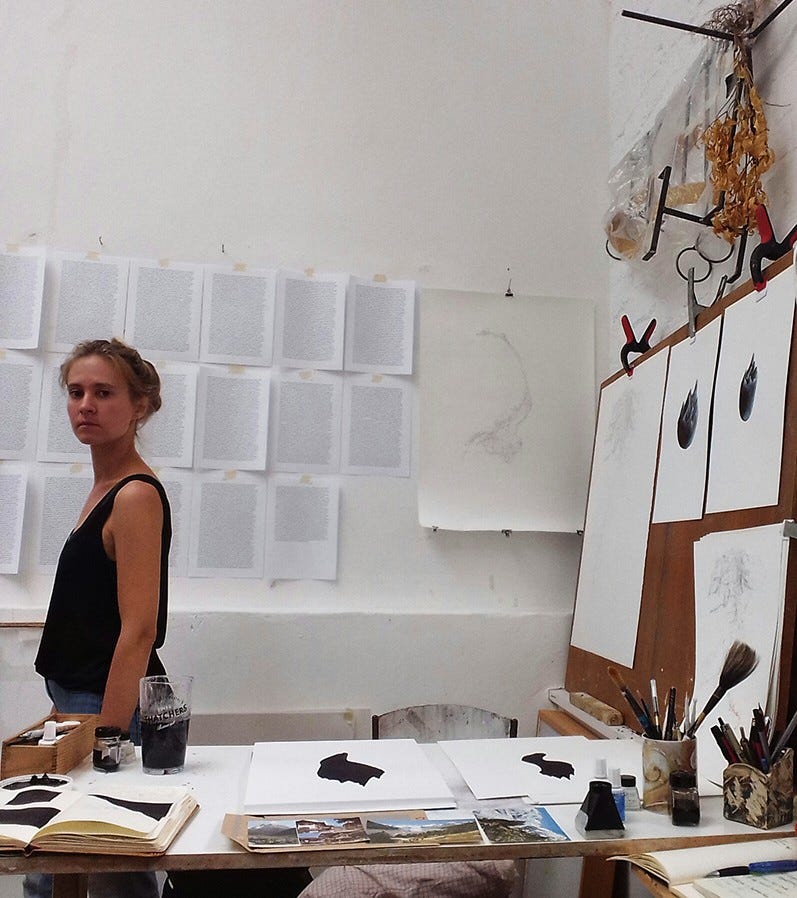Thirty Years of Creative Exchange: The Enduring Impact of a Simple Idea
In 1995, a simple but powerful idea took root, and a quiet revolution began that’s been steadily shaping England’s visual arts landscape for three decades. AA2A (Artists Access to Art Colleges) was established to create mutually beneficial partnerships between visual artists and further and higher education institutions. The concept was clear: enable artists to access college and university facilities and resources, and in return, enrich students’ understanding of professional creative practice.
Artists, often constrained by limited access to space, time, and equipment, are driven by the desire to experiment and innovate. At the same time, universities have state-of-the-art facilities and expert staff, with a responsibility to prepare students for careers in the creative industries. AA2A serves as a bridge - facilitating access for artists to these invaluable resources, while providing students with insight into the realities of life as a working artist by inviting artists to work alongside them.
Founded by Director Wendy Mason following four years of research, development and pilot programmes, AA2A was formally launched with the backing of the National Association of Fine Art Education (NAFAE) in 1999. In 2002, the initiative found a home with the Council for Higher Education in Art and Design (CHEAD), finally becoming an independent organisation in 2010 and gaining prestigious Arts Council England NPO (National Portfolio Organisation) status in 2018.
Among the first institutions to host artists were the University of Derby, London Metropolitan University and Barnet College. These early partnerships welcomed artists into departments ranging from printmaking and textiles to fine art and digital media. At a time when digital visibility was minimal and social media nonexistent, the opportunity for face-to-face exchange within a vibrant academic community was deeply valued. As one early participant noted: “Making art can be a solitary endeavour. Reconnecting with the creative energy of an art college was invaluable.” Another commented: “Being able to use art college facilities - I don’t know of any other ways to do this.”
Since those early days, over 70 institutions - from smaller providers such as Blackpool School of Arts and Hereford College of Arts, to large city-based universities like Manchester Metropolitan and Loughborough, and specialist institutions including Leeds Art College and UCA Farnham - have taken part in hosting AA2A residencies. “Students have been inspired and received guidance from practising artists, designers and makers and developed their networks while learning about the realities and challenges of working in the creative sector,” said one academic lead.
The COVID-19 pandemic presented an unprecedented challenge, but AA2A adapted swiftly, developing vital online resources for students and maintaining engagement with artists until safe, in-person collaboration could resume.
Today, the legacy of the programme is reflected in its alumni. This includes internationally recognised figures such as Turner Prize 2019 winner Helen Cammock (UCLan, 2017-18), Turner Prize 2021 nominee (as part of gentle/radical) Thomas Goddard (City of Bath College, 2008-09), Venice Biennale exhibitors Emily Speed (Liverpool Community College, 2007-08 and Chester, 2012-13) and Hannah Leighton-Boyce (MMU, 2013-14), alongside a host of successful artists and collectives including Hetain Patel (Derby, 2004-05), Catherine Bertola (Sunderland, 2015-16), Mani Kambo (Sunderland, 2022-23), Juneau Projects (Coventry, 2012-13), Hilary Jack (MMU, 2012-13), Suki Chan (Salford, 2003-04 and Kingston, 2010-11), Rachael Goodyear (MMU, 2011-12), Yelena Popova (Sheffield Hallam, 2018-19), Rebecca Chesney (UCLan, 2010-11 and 2015-16) and Nick Hornby (Camberwell College of Arts, 2009-10 and Chelsea College of Art and Design, 2011-12).
Thirty years of running the programme have demonstrated that artists consistently view AA2A as a highly rewarding experience. Aliyah Hussain (UCLan, 2023-24) said: “It has been an absolutely amazing experience to be part of the residency from start to finish. It’s been invaluable to the development of my practice and working in the ceramics department at UCLan has pushed my work in an ambitious direction I couldn’t have achieved without the program. I’ve learnt so much. I’ve already recommended the scheme to all the other artists I know!”
AA2A is still about that first idea - giving artists the space, time and tools to explore, and giving students a chance to gain a practical understanding of what a creative career really looks like. The organisation's founding principles remain just as vital today. So far, the programme has supported over 1,000 artists in residence, enabling them to innovate, experiment and collaborate. Looking to the future, AA2A remains committed to nurturing the next generation of creative practitioners through this powerful model of exchange, and to welcoming the next 1,000 artists.
Mags McLeary
AA2A National Coordinator




